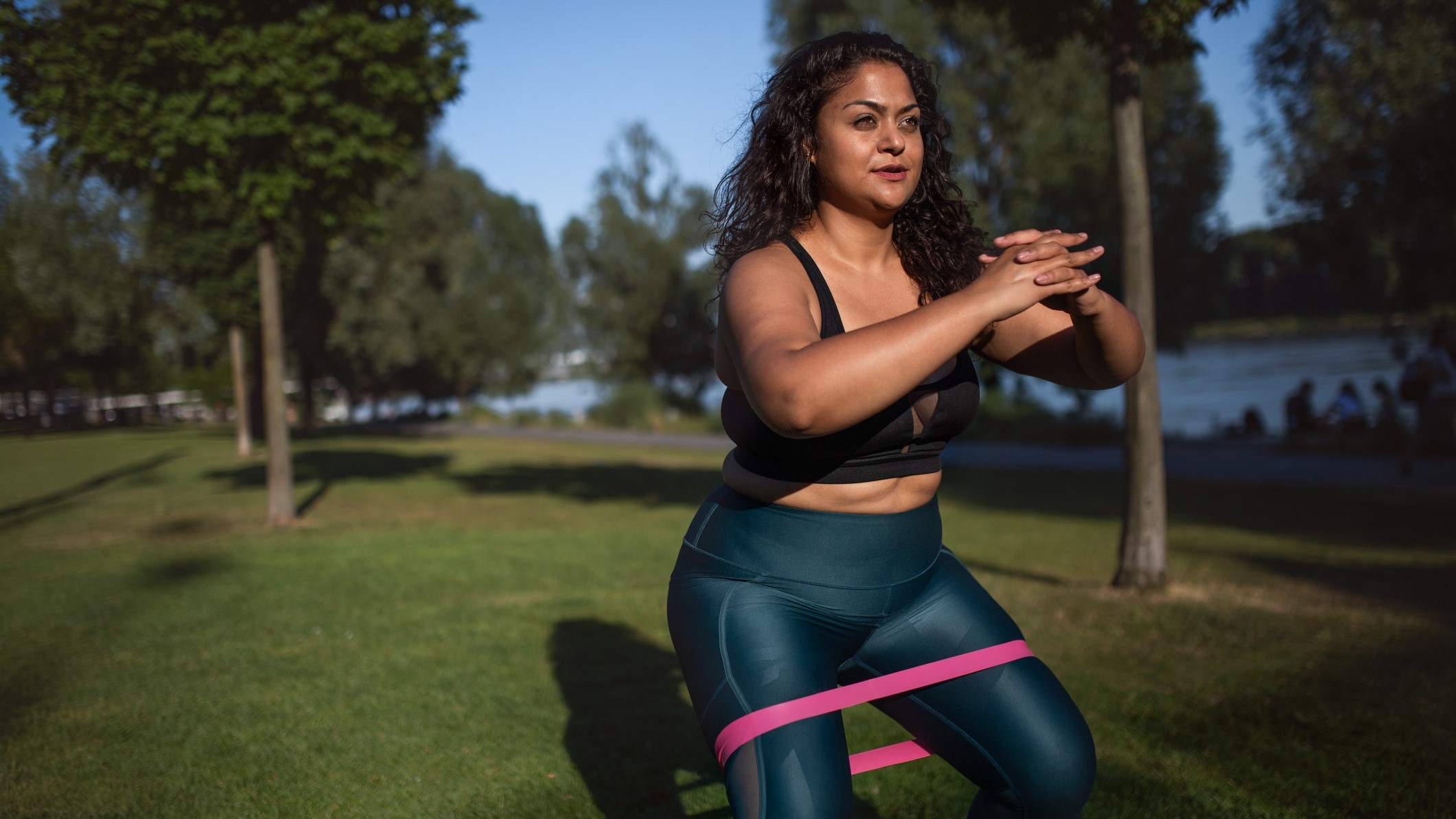Do you hold on to body fat? Give these exercises a try

Different body types — also known as somatotypes — react better to different exercises. There are three different body types — endomorphs, mesomorphs, and ectomorphs. The best exercises for endomorphs may differ slightly from the best exercises for mesomorphs or ectomorphs.
“Endomorphs are typically heavier set and hold a lot of body fat,” says personal trainer Aimee Victoria Long, who adds that endomorphs tend to put on weight very easily, whilst also struggling to lose weight.
When it comes to the best exercises for endomorphs, Long says that the best results will come from a mixture of resistance training and cardio work: “Cardio work will allow endomorphs to increase their daily calorie expenditure and resistance training will encourage muscle growth.”
She recommends that endomorph body types aim to train five times per week with two full-body resistance sessions and three cardio-based sessions.
“Depending on body weight and risk of injury, endomorphs may want to look at low impact cardio options such as incline walking or spinning,” says Long. Incline walking can either be done on a treadmill or you could find a hilly outdoor area. Walk for a minimum of 20 minutes, and increase this over time as you become fitter.
“For resistance training, look at working up to rep ranges of 12 to 15 for each exercise. This will encourage muscle growth but also keep your average heart rate higher during workouts meaning you’re getting a slight cardiovascular benefit during the workout” Long adds.
Diet, fitness, and recovery tips for endomorphs
Long explains that endomorphs should look at nutrition first when it comes to weight loss.
Get instant access to breaking news, the hottest reviews, great deals and helpful tips.
“To lose body fat, endomorphs need to be looking at being in a calorie deficit, meaning they are burning more calories than they are consuming. If they get their nutrition right they will be able to lose weight without even changing up their exercise routine,” says Long.
She also adds that endomorphs needn’t worry about macro breakdown (protein, carbs, and fats) and should just concentrate on being in a calorie deficit. A good way to track your calories is by using a calorie tracker such as My Fitness Pal. This can give a useful insight into how much you may be eating; often, we are eating far more calories than we think!
Be sure to factor in rest days to your workout regime; however, this doesn’t mean just sitting still all day. Walking and even swimming are great ways to incorporate movement into a rest day, whilst still allowing the body to recover.
Here’s more on how to lose weight by walking.

The best exercises for endomorphs
If you have an endomorph body type, these are the best exercises to add to your routine. Aim for two to four sets of each of the exercises below, with 12 to 15 reps per set.
For most of these exercises, you’ll need some weights — we’ve found the best adjustable dumbbells for weightlifting at home here.
Squats
Use a barbell for this move or hold a dumbbell on each shoulder.
Stand upright, with feet shoulder-width apart and toes pointing out slightly. Keep your core engaged and back flat as you push your hips back and bend the knees to drop down into a squat position. Drop down to the point where your thighs are at least parallel to the ground. Then, push up through the heels to rise back up to standing.
Here’s how to do resistance band squats, and the variations to try.
Deadlifts
Stand with feet shoulder-width apart, with your bar over your feet, just in front of your shins. Push your hips back, bend your knees a little and lean forward, keeping a flat back and engaging the core. Your neck should also be in line with your back. Grab the bar, placing hands just outside of the legs, with palms facing towards you.
As you push through your feet, drive up to standing, bringing the bar up with you. Keep your arms straight, and once you’re standing, squeeze the glutes. Then, bend the knees, push your hips back, and lower the bar back down to the floor, keeping it close to your legs as you do so.
Here are the benefits of deadlifts, and how to deadlift with a resistance band if you don’t have weights.
Lunges
For this exercise, you can use a barbell across your upper back, hold a dumbbell on each shoulder or hold one heavier dumbbell with both hands, close to your chest. Stand upright, with back flat, and gaze forward. Take a big step forward with your left leg, bend at the knee and lower down. Your back right knee should be hovering above the ground and your front knee shouldn’t be any further forward than your front left toe. Push up through the front heel and rise up back to your start position. Then, go again with the other leg.
Here’s how to do lunges with the correct form, the benefits, and the variations to try.
Lat Pulldowns
The wider your grip on the lat pulldown bar, the more your lats have to work during the exercise. Sit upright, feet flat on the floor, and grip the bar above you, arms extended. Slowly pull the bar down to your upper chest area, pause, then slowly return the bar up.
Here’s why lat pulldowns are so good at working your back muscles.
Bench Press
Lie back on a flat bench, feet flat on the floor, and hold a barbell right above your shoulders, with hands just a touch wider than shoulder-width apart. You may need a spotter or a rack for this move, especially if you’re using a heavier weight.
Engage your core and lower the bar down to your chest. Pause, then slowly press the bar back up. As you do this move, make sure your hips stay on the bench and try to avoid your back arching, as this can lead to injury.
Shoulder Press
Stand upright (or you can do this sitting upright on a bench), holding a dumbbell by each shoulder with palms facing forward. Elbows should be bent at a 90-degree angle.
Keep your back and core engaged as you extend the arms up, and push the dumbbells overhead. Then, slowly return the dumbbells to the start position.
Lucy is a freelance health and fitness journalist as well as a pre and post-natal personal trainer. Although a sweaty gym session (skipping rope is a must) is her favorite way to ‘relax’, she’s also a fan of bingeing on The Office, snacking on chocolate-coated raisins, and fizz-filled brunches with friends.

